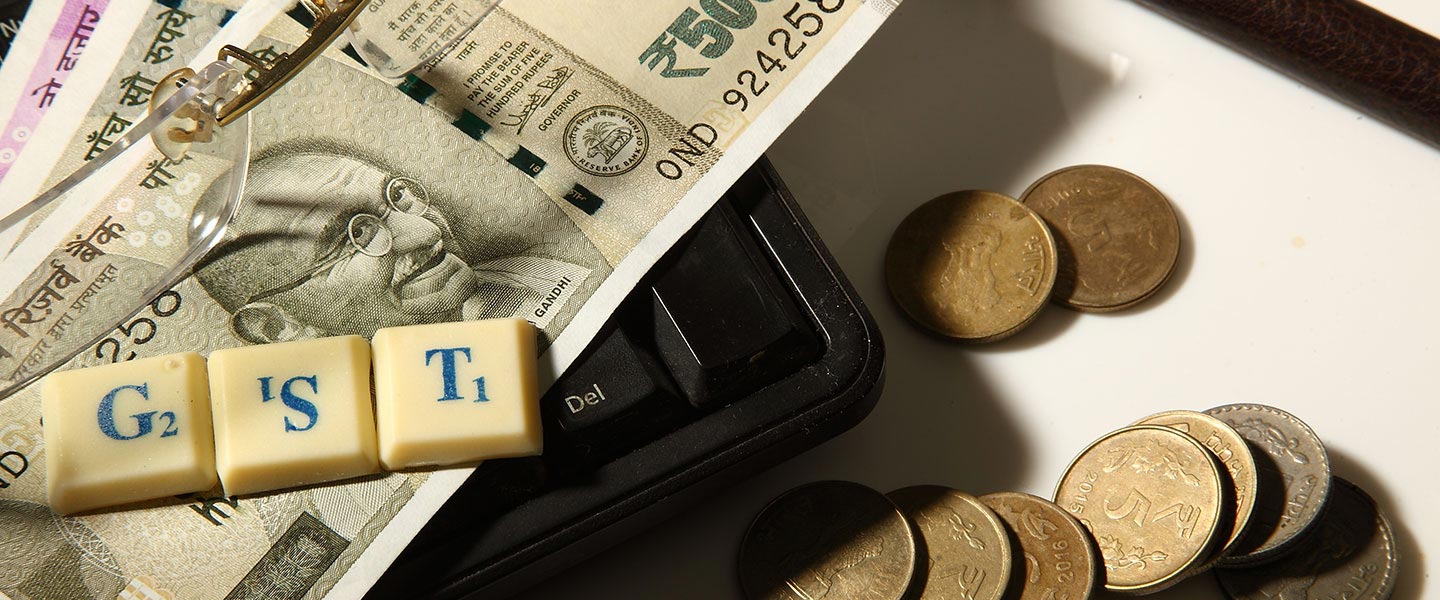-
Business Consulting
Our business consulting specialists offer a comprehensive blend of strategic advisory services. We assess the business, industry, operating model, synergy, skill sets and vision of the organisation and recommend the way forward
-
Digital Natives
Unlock growth with Grant Thornton Bharat's Digital Natives solutions. Customised support for tech-driven companies in healthcare, gaming, and more.
-
Digital Transformation Services
Grant Thornton’s digital transformation services help traditional businesses digitalise their business models with cloud technology, IoT consulting, app development and more DigiTech solutions.
-
Finance Transformation
Using a holistic approach, integrating digitalisation and digital transformation we help clients achieve transparency, control, governance, and faster decision making through real-time data within the business.
-
Human Capital Consulting
Our Human Capital Consulting team harnesses technology and industry expertise to assist in constructing adaptable organisations with transparency, fostering productive and value-driven workforces, and inspiring employees to engage meaningfully in their tasks.
-
Production Linked Incentive Scheme
Production-linked Incentive Scheme by the Indian government is aimed at boosting manufacturing. Grant Thornton Bharat offers varied services across sectors to help businesses avail of this scheme.
-
Public Sector Advisory
Our Public Sector Advisory team has focused streams, aligned with the core priorities of the Government of India. We are responsible for providing innovative and customized technical and managerial solutions.
-
Tech Advisory
We have amalgamated Digital Transformation, IT Advisory & Information Management and Analytics into a new offering, DigiTech.

-
Direct Tax services
Our tax specialists offer a comprehensive blend of tax services, tax litigation, regulatory and compliance services, helping you navigate through complex business matters.
-
Indirect Tax Services
Get tax services by leading tax firm Grant Thornton India. Our indirect tax services include consulting, compliance and litigation services for corporate, international and transaction tax
-
Transfer pricing services
Our transfer pricing services experts provide a range of services from provision of APA services to handling large global assignments including Country by Country reporting.
-
US Tax
At Grant Thornton, we help individuals and dynamic companies deal with US tax laws, which are one of the most complicated tax legislations across the world.
-
Financial Services - Tax
Best financial advisory services, tailored for small and large businesses by the experts having comprehensive knowledge of domestic laws and access to multifaceted tools to provide a valuable results.
-
Financial Reporting consulting services
Our experts have significant hands-on experience in providing IFRS/US GAAP services, end-to-end solutions and support services to fulfil financial reporting requirements.
-
Fund accounting and financial reporting
International operations often lack standardisation and have varied local reporting formats and requirements. Our experts can offer proactive insights, practical guidance, and positive progress and help meet regulatory timeframes.
-
Compliance and Secretarial Services
Our experts can assist in overhauling the entire compliance machinery of the organisation through evaluation of the applicable statutory obligations, monitoring of adequate governance controls, reporting and providing ongoing support.
-
Global People Solutions
As businesses transcend borders, both domestic and global considerations need equal attention. Our interim CFO and financial controller support services help organisations meet the business vision.
-
Finance and accounting outsourcing
Our accounting experts assist organisations in managing their accounting and reporting. Our dedicated Integrated Knowledge and Capability Centre (IKCC), allows us to service both the domestic and global markets efficiently and cost-effectively
-
Compliance Management System
We have automation solutions for you that will allow meeting government requirements and remain diligent, which when failed, can lead to penalties and loss in revenue.
-
Global compliance and reporting solutions
At Grant Thornton Bharat, we meet the challenges of our clients and help them unlock their potential for growth. Our professionals offer solutions tailored to meet our clients’ global accounting and statutory reporting requirements. With first-hand experience of local reporting requirements in more than 145+ locations worldwide, we provide seamless and consistent international service delivery through a single point of contact.
-
Related-party transaction governance
Related-party transactions (RPTs) are common in business structures where organisations engage with their group entities, such as holding companies, subsidiaries, associate concerns, joint ventures, or key management personnel, for various operational or financial purposes.
-
Family Offices & Private Client Services
Grant Thornton Bharat Private Client Services offers tailored advisory for family-owned businesses, focusing on governance, compliance, tax, succession planning, and family office structuring to sustain wealth and preserve legacies across generations.
-
GTMitra: Tax & Regulatory Tool
GTMitra, a specialised tax and regulatory tool by Grant Thornton Bharat, supports multinational businesses in understanding laws and regulations for effective growth strategies.
-
Labour codes
Labour codes solutions help you transition through the new legislation. At Grant Thornton, we help businesses divide their approach to make sure a smooth transition.
-
Alerts
At Grant Thornton India, with the help of our tax alerts, we help to provide updates on how to minimise your tax exposure and risks.
-
Unlocking opportunities: India investment roadmap
The India Investment Roadmap resource is designed to navigate the complexities of Indian tax and regulatory laws, providing seamless guidance and a comprehensive set of solutions to ensure a smooth process for investors aiming to establish or expand their presence in India.
-
CFO Solutions
Our comprehensive suite of solutions for CFOs

-
Cyber
In today’s time, businesses have gone through large transformation initiatives such as adoption of digital technologies, transition to cloud, use of advanced technologies et al.
-
Risk Optimisation
Our Governance, Risk and Operations (GRO) services encompass Internal Audit, Enterprise Risk Management, Internal Financial Controls, IT advisory, Standard Operating Procedures and other services.
-
Risk analytics
Grant Thornton Bharat’s CLEARR Insights is a state-of-the art data analytics platform that will help you in seamless data analysis and efficient decision-making.
-
Forensic & Investigation Services
The team of forensic advisory services experts consists of the best intelligence corporate experts, and fraud risk, computer forensic experts to deliver most effective solutions to dynamic Indian businesses.
-
ESG consulting
Grant Thornton Bharat offers holistic ESG consulting solutions for sustainable business outcomes. With industry expertise and AI technology, we drive long-term value.

-
Transaction Tax Services
Our transaction tax experts understand your business, anticipate your needs and come up with robust tax solutions that help you achieve business objectives ensuring compliance and efficiency
-
Deal Advisory
Unlike other M&A advisory firm in India, we offer deal advisory services and work exclusively with controlled and well-designed strategies to help businesses grow, expand and create value.
-
Due Diligence
Grant Thornton’s financial due diligence services are aimed at corporate looking for mergers and acquisitions, private equity firms evaluating investments and businesses/promoters considering sale/divestment.
-
Valuations
As one of the leading valuation consultants in India, Grant Thornton specializes in all the aspects of the process like business valuation services, financial reporting, tax issues, etc.
-
Overseas Listing
Overseas listing presents a perfect platform for mid-sized Indian companies with global ambitions. Grant Thornton’s team of experts in listings, work closely with clients during all stages.
-
Debt & Special Situations Solutions
Grant Thornton Bharat offers specialist debt and special situations consulting services, including restructuring, insolvency, and asset tracing solutions.
-
Financial Reporting Advisory Services
Grant Thornton Bharat Financial Reporting Advisory Services offer end-to-end solutions for complex financial requirements, including GAAP conversions, IPO support, and hedge accounting advisory, ensuring accurate financial reporting and compliance.
-
Financial Statement Audit and Attestation Services
Grant Thornton Bharat offers customised financial statement audit and attestation services, ensuring impeccable quality and compliance with global standards. Our partner-led approach, technical expertise, and market credibility ensure effective solutions for your business needs.

- Agriculture
- Asset management
- Automotive and EV
- Aviation
- Banking
- Education and ed-tech
- Energy & Renewables
- Engineering & industrial products
- Fintech
- FMCG & consumer goods
- Food processing
- Gaming
- Healthcare
- Urban infrastructure
- Insurance
- Media
- Medical devices
- Metals & Mining
- NBFC
- Pharma, bio tech & life sciences
- Real estate and REITs
- Retail & E-commerce
- Specialty chemicals
- Sports
- Technology
- Telecom
- Transportation & logistics
- Tourism & hospitality
-
 Thought leadership Co-lending in India: Expanding credit access for MSMEsIn today’s rapidly evolving financial landscape, co-lending has emerged as a key enabler of credit expansion in India, facilitating partnerships between banks and non-banking financial companies (NBFCs) to extend credit more efficiently to underserved segments.
Thought leadership Co-lending in India: Expanding credit access for MSMEsIn today’s rapidly evolving financial landscape, co-lending has emerged as a key enabler of credit expansion in India, facilitating partnerships between banks and non-banking financial companies (NBFCs) to extend credit more efficiently to underserved segments. -
 Article Why India’s financial inclusion journey needs to focus on equity and access to creditFinancial services have expanded over a decade, giving millions access to bank accounts and digital payments. But true empowerment needs to reach every corner of the country if growth is to be long-term and sustained
Article Why India’s financial inclusion journey needs to focus on equity and access to creditFinancial services have expanded over a decade, giving millions access to bank accounts and digital payments. But true empowerment needs to reach every corner of the country if growth is to be long-term and sustained -
 Thought Leadership Competitive and sustainable agriculture & food processing in KeralaThe economy of Kerala is primarily driven by the services sector, which contributes 66% to the Gross State Domestic Product (GSDP).
Thought Leadership Competitive and sustainable agriculture & food processing in KeralaThe economy of Kerala is primarily driven by the services sector, which contributes 66% to the Gross State Domestic Product (GSDP). -
 Article Economic Survey 2024-25: Deregulation, investment and innovation for a Viksit BharatIndia's economic growth remains for a steady trajectory with real GDP expected to grow at 6.4% in FY25 and in the range of 6.3%-6.8% in FY26, reflecting resilience despite global uncertainties.
Article Economic Survey 2024-25: Deregulation, investment and innovation for a Viksit BharatIndia's economic growth remains for a steady trajectory with real GDP expected to grow at 6.4% in FY25 and in the range of 6.3%-6.8% in FY26, reflecting resilience despite global uncertainties.
-
India-UK
India-UK

The goods and services tax marked its fourth anniversary on 1 July 2021. It is time to take a step back, evaluate its impact and efforts required to make it one of the most successful tax reforms in indirect taxation.
India made a breakthrough move by introducing a new Indirect tax regime-goods and services tax (GST) also termed as ‘One Nation One tax’ in 2017. The rationale was to create more effective and efficient tax regime that could curb multiple taxes existing at the Centre and state and promote ease of doing business in India.
In erstwhile tax regime, the Indian taxpayers had to make strenuous efforts to comply with indirect tax laws because of multiple procedures, multiple registrations and dealing with multiple tax authorities. GST has subsumed various indirect taxes viz. excise duty, value added tax, central sales tax, service tax etc., which has certainly led to integration of multiple taxes and overall ease of compliance.
While the government is working pro-actively to resolve issues faced by taxpayers across industries, the industry is continuously learning to adapt to the changes. Standardisation of legislation and compliances across India has been a boon for traders and manufacturers earlier grappling with separate compliances under multiple laws. On the other hand, as opposed to a centralized registration and compliances earlier, the shift to state-wise registrations and monthly compliances has increased the compliance burden for the services industry. To address concerns of businesses, the government has made a proposal to consolidate all periodical returns into a single return. The GST Council is already working on the new format and necessary IT-related changes to make this effective. With the simplified return filing model, it can be expected that GST will become a far smoother process than what it is right now.
Since the inception of GST, there has been an overall increase in revenue for the government. by increase in taxpayer base, automation and digitization of the Indirect taxes and ease of doing compliances.
One of the main objectives of GST was to create an automated indirect tax ecosystem i.e., replace Inspector with IT. Digitisation of processes in filing of returns and refund claims helped in reducing personal interface in the processes and brought more transparency in operations for taxpayers. Later, introduction of e-invoicing and e-way bill proved to be a gateway of digitisation of business processes.
E-way bill, an accompaniment to the nationwide GST, was launched in 2018 to track the movement of goods across the country and curb tax evasion. Introduction of E-way bill system led to removal of inter-state check points leading to no unnecessary delays in transit. The system has evolved in the last three years with additional functionalities such as auto calculation of distance based on pin codes, verification of vehicle number, blocking of e-way bill for non-filers and integration of e-way bill system with e-invoice system.
E-invoicing was another technological reform introduced on 1 October 2020 when organisations with turnover greater than INR 500 crore were mandated to raise invoices digitally. This was a system of interoperable electronic invoices generated by taxpayers but authenticated by the government through the e-invoice portal. This digital push in compliances was much needed and appreciated by the Indian Inc. There were certain initial technological challenges with regard to issuance of E-invoices through the portal and confusions around requirement of QR code but the same have been ironed out over a period of time.
Another aspect where the government tried to digitise and ease the compliance burden on taxpayers was to bring matching concept for a seamless flow of input tax credit (ITC). ITC can be taken if the recipient accepts the information furnished by supplier and vice-versa. However, in case of any discrepancy between the information furnished by the supplier and the recipient, the same shall be communicated to both the parties in the form of mismatch report. To the extent, suitable rectification is not made, the recipient is required to reverse ITC on the same.
Numerous taxpayers registered under GST are receiving notices from the department asking them to explain the mismatch of ITC claimed in returns vis-à-vis tax reported by their vendors. The taxpayers have been asked to reverse ITC along with interest and penalty. The matching concept was introduced to prevent fraudulent availment of ITC and, to this extent, the department is undeniably right in acting for disciplining the same. However, the rightfulness of the action gets impugned when it trespasses into the rink of bona fide taxpayers. This was also taken up by the High Court recently wherein it held that the recipient cannot be denied credit due to a default by the supplier. The industry is hopeful that the government will bring some mechanism to provide respite to honest taxpayers.
Additionally, GST was introduced with a motto to make India a unified market which has also been well established as the GST rates across the country remain uniform. That is why today, unlike in the pre-GST times, the tax rate is not a key criteria for a business while determining where it wants to set up operations. A business can base its decision purely on commercial considerations and fiscal packages that states offer to promote investment. However, the core theme of unified market may get diluted if states continue to levy cesses, such as Kerala flood cess, COVID-19 cess. The industry is also hopeful of further rate rationalisation measures and the expectation is that the government may reduce the number of rate slabs.
Also recently, to ease in doing business, the government replaced the requirement of an annual reconciliation statement between annual returns and financial statement by a chartered accountant with self-attestation. However, companies must take note that this would put a higher onus on them since appropriate reconciliations would have to be reported and certified by them.
With good intent but marred by tech glitches, GST has completed four years and it is safe to say that many improvements have been seen since, through various policy updates. The Government has taken necessary measures to fill the loopholes in indirect taxation system which came in way of smooth implementation of GST. It’s worthwhile to acknowledge their efforts to support taxpayers by announcing measures like extending compliance timelines, waiving of late fees and penalty whenever required.
GST still is in its nascent stage, as Government and experts are still digging into the new tax regime and coming up with policies and clarifications. There is still a room for improvement with regards to frequent technical glitches and teething troubles, hurdles on the seamless flow of credit, streaming AAR rulings and bringing goods like petrol, diesel, ATF etc. under GST. In the times to come we should expect further evolution of GST going on to achieve greater success.
This article was originally publised in Comércio, an online magazine by Kirori Mal College.
